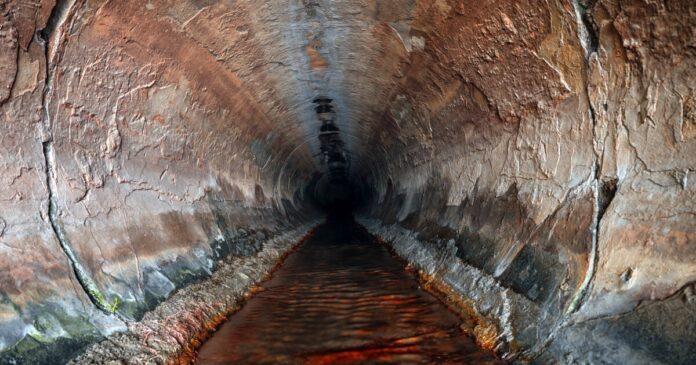A New Solution for Sewer Pipes
Researchers at the University of South Australia have made a breakthrough in creating a new material that could solve a major problem facing sewer pipes worldwide. By using more sludge and less slag in their recipe, they have developed a material that is stronger than today’s enhanced cements and highly resistant to corrosion by acid.
What is Slag and Sludge?
When manufacturers produce cement for concrete, they can add a material called ground granulated blast furnace slag (GGBS) to their mixture. GGBS is a by-product of iron produced by blast furnaces and consists of iron ore, coke, and limestone that’s been dried and powdered. Adding GGBS to a cement mixture makes it stronger and enhances its permeability to certain substances. On the other hand, sludge is the material that settles out of water when it goes through purification at a treatment plant. The researchers focused on alum-based water treatment sludge, which is formed when aluminium sulfate binds with solids and organic material during the water-treatment process.
The New Material
When the researchers replaced 20-40% of the slag with dehydrated sludge in a cement mixture, they found that the resultant material had over a 50% higher compressive strength than cements using only GGBS as an additive. Equally importantly, the mixture was highly resistant to sulphur-oxidizing bacteria as well as acids. This is significant because traditional concrete sewer pipes made from cement are highly susceptible to degradation by acid and action by microbes.
Environmental Benefits
The new material not only creates a stronger and more durable sewer pipe but also has environmental benefits. Using the new cement in concrete mixtures reduces its environmental impact because it makes use of waste produced by the water treatment industry and cuts down on greenhouse gas emissions. Sludge is usually disposed of in landfill sites, which not only reduces available land for other uses but also harms the environment, creating CO2 emissions from transporting the waste.
Potential Impact
Considering that some estimates say that there are enough sewer pipes in use globally to circle the equator multiple times, if the new material finds its way into sewage systems in the coming years, it could have a dramatic impact on pollution. The construction industry is one of the world’s biggest greenhouse gas emitters, so if we can cut down on the need for cement, we will be helping to lower carbon emissions.
Conclusion
The new cement has the potential to extend the service life of sewage pipes, reduce maintenance costs, and promote the reuse of water treatment byproducts, thus contributing to the circular economy. While more study needs to be done to evaluate the long-term real-world use of the new material in actual sewer lines and to figure out just how scalable the cement is, it could join other enhanced and greener cements in the future. The concrete-creation process is estimated to be responsible for about 8% of global CO2 emissions per year, so anything that can help clean it up could go a long way to improving the environment. The new cement has been reported in the Journal of Building Engineering, and it is a significant step towards creating a more sustainable and environmentally friendly construction industry.

